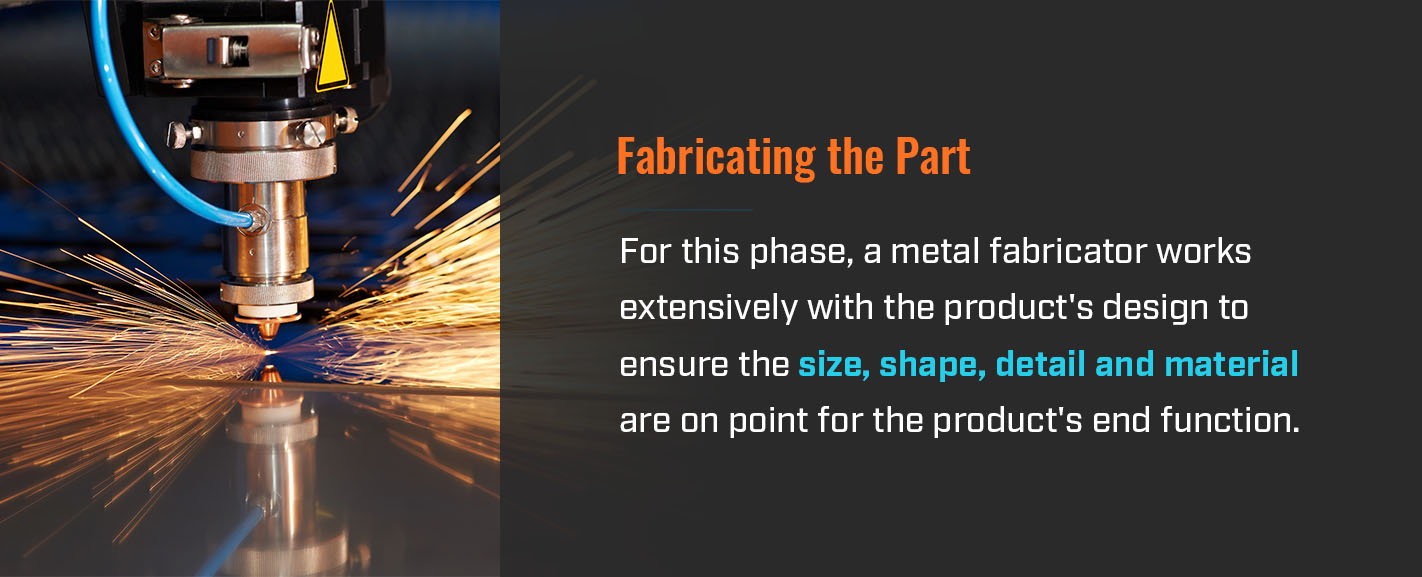
Metal fabrication is a process that creates structures or products by assembling, bending or cutting metal material. Ultimately, this process is value-added because it involves using metal to make durable objects.
Metal fabricators usually work with various raw materials such as aluminum, steel, cast metal, expanded metal and sheet metal. In other words, metal fabrication begins with raw materials and ends with a metal structure or part that serves a specific purpose.
Next, let’s explore the three phases of the metal fabrication process.
The metal fabrication process typically consists of three critical phases, each of which builds upon the previous one. Let’s explore more.
Designing the product or structure you want to end with is the first step in metal fabrication. Some businesses will send metal fabricators a completed design, but sometimes they send a prototype for the metal fabricator to refine and test to ensure it fits with the final product.
Usually, this process relies on computer-aided manufacturing or computer-aided design programs to develop a 3D prototype before working with the raw materials of the metal product or structure.
This stage of the process is critical in ensuring that all the components of the product or structure will eventually function correctly. For example, a designer will establish the types of metal used during fabrication and the finishing processes they will require.
Ultimately, you can think of this stage of the metal fabrication process as the creative phase.
The building portion of the process comes next, where a metal fabricator cuts and shapes each of the product’s components designed during the previous phase. This stage typically takes place in a fabrication shop.
This phase requires various tools because different processes require specific machines to execute correctly. Some examples of tools a manufacturer might use during this stage include 2D or 3D lasers, roll forming equipment, tube bender, welders, and press brakes, depending on what structure or product they are creating.
For this phase, a metal fabricator works extensively with the product’s design to ensure the size, shape, detail and material are on point for the product’s end function.

The metal fabrication process ends with assembling and finishing the metal materials into the final product. This stage aims to ensure the final product or structure is ready for its intended purpose.
Typical finishing techniques used during this part of the process include deburring, which ensures the material does not have excess material and works as it should, and powder coating, which helps the final product or structure look pleasing to the eye.
Metal fabrication has various applications in the industrial, structural and commercial fields.
The process that assembles parts or structures into industrial products is industrial metal fabrication. Typically, these consist of plates or sheet metal.
Industrial fabricators usually serve industries including automotive, material handling, water treatment, pollution engineering, alternative energy and aerospace. The items industrial fabricators make for these sectors include large products, such as heavy machine parts, silos and tanks.
Structural metal fabrication involves creating robust, durable metal parts such as I-beams. The components created by structural metal fabrication are crucial in the construction field, whether the project is residential, industrial or commercial.
Most often, structural metal fabricators use steel because of its strength-to-weight ratio. Many construction projects use steel in some form.
Many commercial building foundations are steel. Famously, steel forms the foundation of landmarks like the Sydney Harbour Bridge and New York City’s Empire State Building.
Structural projects often feature metal parts like these.
Commercial venues like stores, municipal buildings, restaurants and public spaces use commercial metal fabrication to create parts for them. Products commercial metal fabricators might make include conveyors, shelving, sinks, awnings and guardrails.
Commercial metal fabricators also create ornamental or decorative metal to make building exteriors more aesthetically pleasing.
The parts made from commercial metal fabrication are typically smaller and more detailed than those made from structural or industrial manufacturing. However, these parts are just as crucial to how commercial venues operate because they often play functional and safety roles.
At PBZ Manufacturing, we’re happy to provide you with an opportunity for resourceful manufacturing. What does that entail? Our complete process involves all of the following — engineering, manufacturing, finishing, assembling and shipping. Our full-service capability allows us to reduce your project completion timeline and lower your manufacturing costs.
If you want to learn more about us and what we can do for you, give us a call at 717-584-8767 or fill out our online contact form.